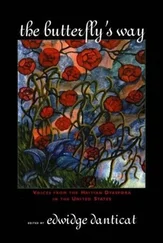Hubert Bancroft - The Native Races [of the Pacific states], Volume 1, Wild Tribes
Здесь есть возможность читать онлайн «Hubert Bancroft - The Native Races [of the Pacific states], Volume 1, Wild Tribes» — ознакомительный отрывок электронной книги совершенно бесплатно, а после прочтения отрывка купить полную версию. В некоторых случаях можно слушать аудио, скачать через торрент в формате fb2 и присутствует краткое содержание. ISBN: , Жанр: foreign_antique, foreign_prose, на английском языке. Описание произведения, (предисловие) а так же отзывы посетителей доступны на портале библиотеки ЛибКат.
- Название:The Native Races [of the Pacific states], Volume 1, Wild Tribes
- Автор:
- Жанр:
- Год:неизвестен
- ISBN:http://www.gutenberg.org/ebooks/41070
- Рейтинг книги:5 / 5. Голосов: 1
-
Избранное:Добавить в избранное
- Отзывы:
-
Ваша оценка:
- 100
- 1
- 2
- 3
- 4
- 5
The Native Races [of the Pacific states], Volume 1, Wild Tribes: краткое содержание, описание и аннотация
Предлагаем к чтению аннотацию, описание, краткое содержание или предисловие (зависит от того, что написал сам автор книги «The Native Races [of the Pacific states], Volume 1, Wild Tribes»). Если вы не нашли необходимую информацию о книге — напишите в комментариях, мы постараемся отыскать её.
The Native Races [of the Pacific states], Volume 1, Wild Tribes — читать онлайн ознакомительный отрывок
Ниже представлен текст книги, разбитый по страницам. Система сохранения места последней прочитанной страницы, позволяет с удобством читать онлайн бесплатно книгу «The Native Races [of the Pacific states], Volume 1, Wild Tribes», без необходимости каждый раз заново искать на чём Вы остановились. Поставьте закладку, и сможете в любой момент перейти на страницу, на которой закончили чтение.
Интервал:
Закладка:
But the most unique system of architecture in America is improvised by the Eskimos during their seal-hunting expeditions upon the ice, when they occupy a veritable crystal palace fit for an Arctic fairy. On the frozen river or sea, a spot is chosen free from irregularities, and a circle of ten or fifteen feet in diameter drawn on the snow. The snow within the circle is then cut into slabs from three to four inches in thickness, their length being the depth of the snow, and these slabs are formed into a wall enclosing the circle and carried up in courses similar to those of brick or stone, terminating in a dome-shaped roof. A wedge-like slab keys the arch; and this principle in architecture may have first been known to the Assyrians, Egyptians, Chinese or Eskimos. 40Loose snow is then thrown into the crevices, which quickly congeals; an aperture is cut in the side for a door; and if the thin wall is not sufficiently translucent, a piece of ice is fitted into the side for a window. Seats, tables, couches, and even fireplaces are made with frozen snow, and covered with reindeer or seal skin. Out-houses connect with the main room, and frequently a number of dwellings are built contiguously, with a passage from one to another. These houses are comfortable and durable, resisting alike the wind and the thaw until late in the season. Care must be taken that the walls are not so thick as to make them too warm, and so cause a dripping from the interior. A square block of snow serves as a stand for the stone lamp which is their only fire. 41
"The purity of the material," says Sir John Franklin, who saw them build an edifice of this kind at Coppermine River, "of which the house was framed, the elegance of its construction, and the translucency of its walls, which transmitted a very pleasant light, gave it an appearance far superior to a marble building, and one might survey it with feelings somewhat akin to those produced by the contemplation of a Grecian temple, reared by Phidias; both are triumphs of art, inimitable in their kind." 42
Eskimos, fortunately, have not a dainty palate. Everything which sustains life is food for them. Their substantials comprise the flesh of land and marine animals, fish and birds; venison, and whale and seal blubber being chief. Choice dishes, tempting to the appetite, Arctic epicurean dishes, Eskimo nectar and ambrosia, are daintily prepared, hospitably placed before strangers, and eaten and drunk with avidity. Among them are: a bowl of coagulated blood, mashed cranberries with rancid train-oil, whortleberries and walrus-blubber, alternate streaks of putrid black and white whale-fat; venison steeped in seal-oil, raw deer's liver cut in small pieces and mixed with the warm half-digested contents of the animal's stomach; bowls of live maggots, a draught of warm blood from a newly killed animal. 43Fish are sometimes eaten alive. Meats are kept in seal-skin bags for over a year, decomposing meanwhile, but never becoming too rancid for our Eskimos. Their winter store of oil they secure in seal-skin bags, which are buried in the frozen ground. Charlevoix remarks that they are the only race known who prefer food raw. This, however, is not the case. They prefer their food cooked, but do not object to it raw or rotten. They are no lovers of salt. 44
MIGRATIONS FOR FOOD.In mid-winter, while the land is enveloped in darkness, the Eskimo dozes torpidly in his den. Early in September the musk-oxen and reindeer retreat southward, and the fish are confined beneath the frozen covering of the rivers. It is during the short summer, when food is abundant, that they who would not perish must lay up a supply for the winter. When spring opens, and the rivers are cleared of ice, the natives follow the fish, which at that time ascend the streams to spawn, and spear them at the falls and rapids that impede their progress. Small wooden fish are sometimes made and thrown into holes in the ice for a decoy; salmon are taken in a whalebone seine. At this season also reindeer are captured on their way to the coast, whither they resort in the spring to drop their young. Multitudes of geese, ducks, and swans visit the ocean during the same period to breed. 45
August and September are the months for whales. When a whale is discovered rolling on the water, a boat starts out, and from the distance of a few feet a weapon is plunged into its blubbery carcass. The harpoons are so constructed that when this blow is given, the shaft becomes disengaged from the barbed ivory point. To this point a seal-skin buoy or bladder is attached by means of a cord. The blows are repeated; the buoys encumber the monster in diving or swimming, and the ingenious Eskimo is soon able to tow the carcass to the shore. A successful chase secures an abundance of food for the winter. 46Seals are caught during the winter, and considerable skill is required in taking them. Being a warm-blooded respiratory animal, they are obliged to have air, and in order to obtain it, while the surface of the water is undergoing the freezing process, they keep open a breathing-hole by constantly gnawing away the ice. They produce their young in March, and soon afterward the natives abandon their villages and set out on the ice in pursuit of them. Seals, like whales, are also killed with a harpoon to which is attached a bladder. The seal, when struck, may draw the float under water for a time, but is soon obliged to rise to the surface from exhaustion and for air, when he is again attacked and soon obliged to yield.
The Eskimos are no less ingenious in catching wild-fowl, which they accomplish by means of a sling or net made of woven sinews, with ivory balls attached. They also snare birds by means of whalebone nooses, round which fine gravel is scattered as a bait. They manœuvre reindeer to near the edge of a cliff, and, driving them into the sea, kill them from canoes. They also waylay them at the narrow passes, and capture them in great numbers. They construct large reindeer pounds, and set up two diverging rows of turf so as to represent men; the outer extremities of the line being sometimes two miles apart, and narrowing to a small enclosure. Into this trap the unsuspecting animals are driven, when they are easily speared. 47
BEAR-HUNTING.To overcome the formidable polar bear the natives have two strategems. One is by imitating the seal, upon which the bear principally feeds, and thereby enticing it within gunshot. Another is by bending a piece of stiff whalebone, encasing it in a ball of blubber, and freezing the ball, which then holds firm the bent whalebone. Armed with these frozen blubber balls, the natives approach their victim, and, with a discharge of arrows, open the engagement. The bear, smarting with pain, turns upon his tormentors, who, taking to their heels, drop now and then a blubber ball. Bruin, as fond of food as of revenge, pauses for a moment, hastily swallows one, then another, and another. Soon a strange sensation is felt within. The thawing blubber, melted by the heat of the animal's stomach, releases the pent-up whalebone, which, springing into place, plays havoc with the intestines, and brings the bear to a painful and ignominious end. To vegetables, the natives are rather indifferent; berries, acid sorrel leaves, and certain roots, are used as a relish. There is no native intoxicating liquor, but in eating they get gluttonously stupid.
Notwithstanding his long, frigid, biting winter, the Eskimo never suffers from the cold so long as he has an abundance of food. As we have seen, a whale or a moose supplies him with food, shelter, and raiment. With an internal fire, fed by his oily and animal food, glowing in his stomach, his blood at fever heat, he burrows comfortably in ice and snow and frozen ground, without necessity for wood or coal. 48Nor are those passions which are supposed to develop most fully under a milder temperature, wanting in the half-frozen Hyperborean. 49One of the chief difficulties of the Eskimo during the winter is to obtain water, and the women spend a large portion of their time in melting snow over oil-lamps. In the Arctic regions, eating snow is attended with serious consequences. Ice or snow, touched to the lips or tongue, blisters like caustic. Fire is obtained by striking sparks from iron pyrites with quartz. It is a singular fact that in the coldest climate inhabited by man, fire is less used than anywhere else in the world, equatorial regions perhaps excepted. Caloric for the body is supplied by food and supplemented by furs. Snow houses, from their nature, prohibit the use of fire; but cooking with the Eskimo is a luxury, not a necessity. He well understands how to utilize every part of the animals so essential to his existence. With their skins he clothes himself, makes houses, boats, and oil-bags; their flesh and fat he eats. He even devours the contents of the intestines, and with the skin makes water-proof clothing. Knives, arrow-points, house, boat, and sledge frames, fish-hooks, domestic utensils, ice-chisels, and in fact almost all their implements, are made from the horns and bones of the deer, whale, and seal. Bowstrings are made of the sinews of musk-oxen, and ropes of seal-skin. 50The Eskimo's arms are not very formidable. Backed by his ingenuity, they nevertheless prove sufficient for practical purposes; and while his neighbor possesses none better, all are on an equal footing in war. Their most powerful as well as most artistic weapon is the bow. It is made of beech or spruce, in three pieces curving in opposite directions and ingeniously bound by twisted sinews, so as to give the greatest possible strength. Richardson affirms that "in the hands of a native hunter it will propel an arrow with sufficient force to pierce the heart of a musk-ox, or break the leg of a reindeer." Arrows, as well as spears, lances, and darts, are of white spruce, and pointed with bone, ivory, flint, and slate. 51East of the Mackenzie, copper enters largely into the composition of Eskimo utensils. 52Before the introduction of iron by Europeans, stone hatchets were common. 53
Читать дальшеИнтервал:
Закладка:
Похожие книги на «The Native Races [of the Pacific states], Volume 1, Wild Tribes»
Представляем Вашему вниманию похожие книги на «The Native Races [of the Pacific states], Volume 1, Wild Tribes» списком для выбора. Мы отобрали схожую по названию и смыслу литературу в надежде предоставить читателям больше вариантов отыскать новые, интересные, ещё непрочитанные произведения.
Обсуждение, отзывы о книге «The Native Races [of the Pacific states], Volume 1, Wild Tribes» и просто собственные мнения читателей. Оставьте ваши комментарии, напишите, что Вы думаете о произведении, его смысле или главных героях. Укажите что конкретно понравилось, а что нет, и почему Вы так считаете.
![Hubert Bancroft The Native Races [of the Pacific states], Volume 1, Wild Tribes обложка книги](/books/750126/hubert-bancroft-the-native-races-of-the-pacific-s-cover.webp)








![Hubert Bancroft - The Native Races [of the Pacific states], Volume 5, Primitive History](/books/749157/hubert-bancroft-the-native-races-of-the-pacific-s-thumb.webp)


